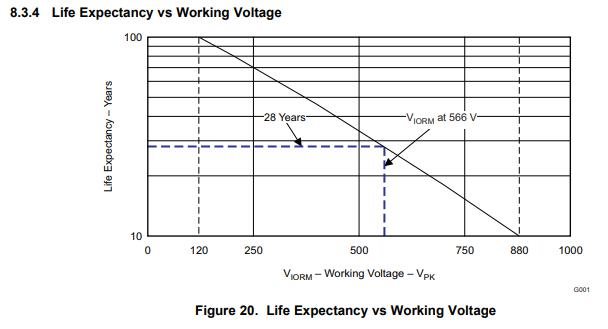Other Parts Discussed in Thread: ISO7841, ISO7741
Hi,
I would like to know Life Expectancy vs Working Voltage of ISO7641 as below(ISO7420FD datahseet), however it is nothing on the datasheet.
Could you share it if you have the data?
Best Regards,
Kuramochi


